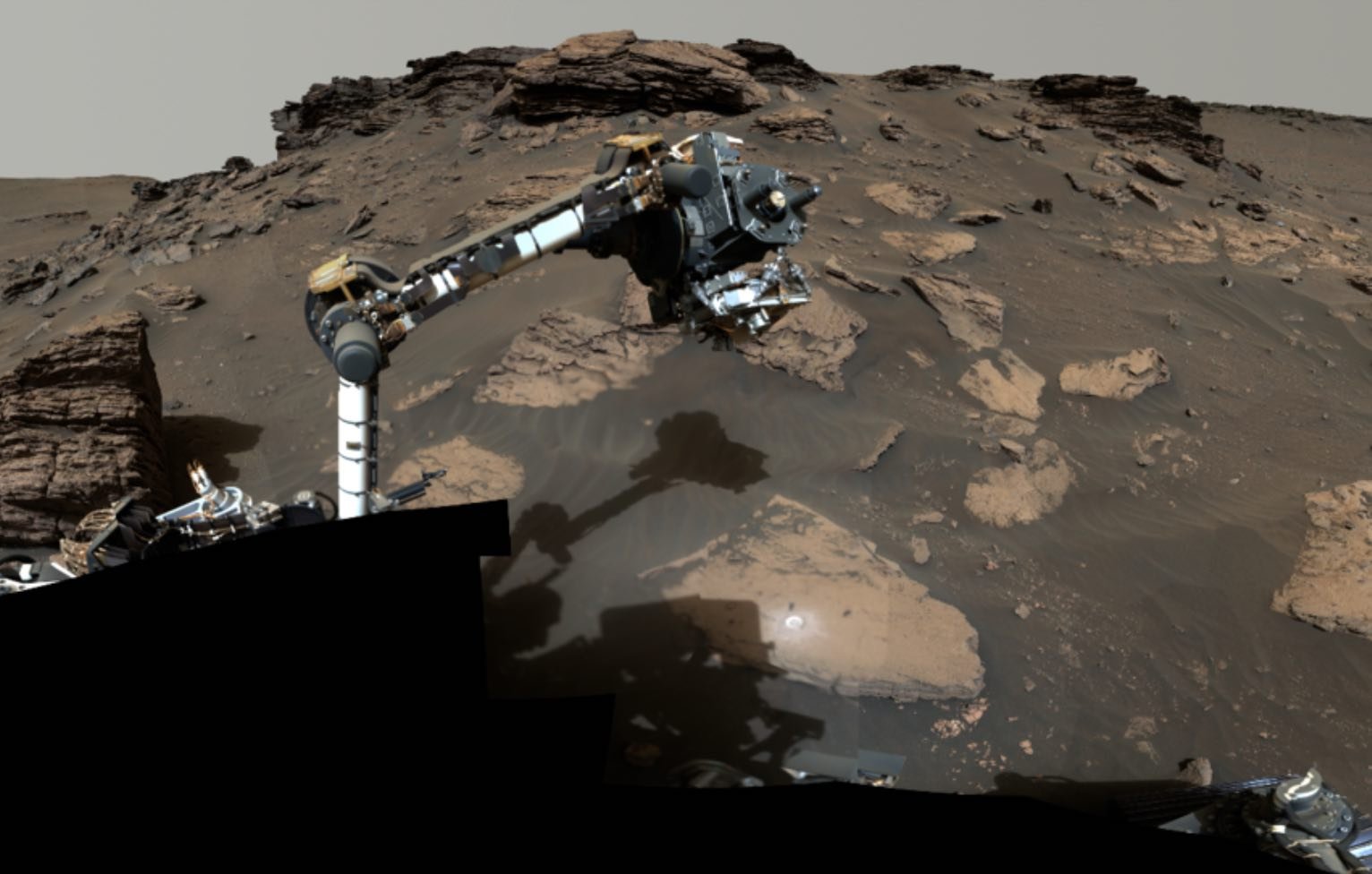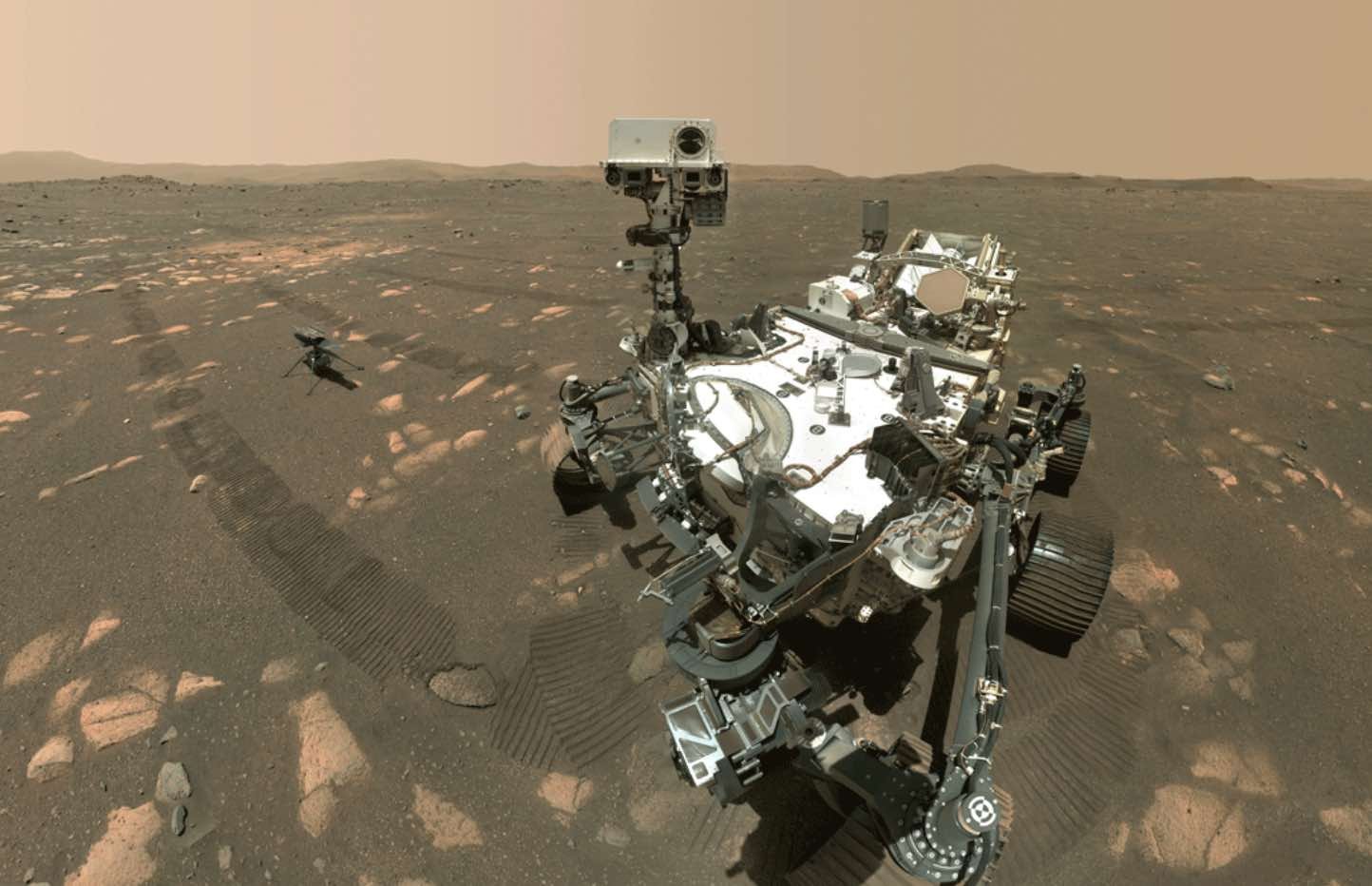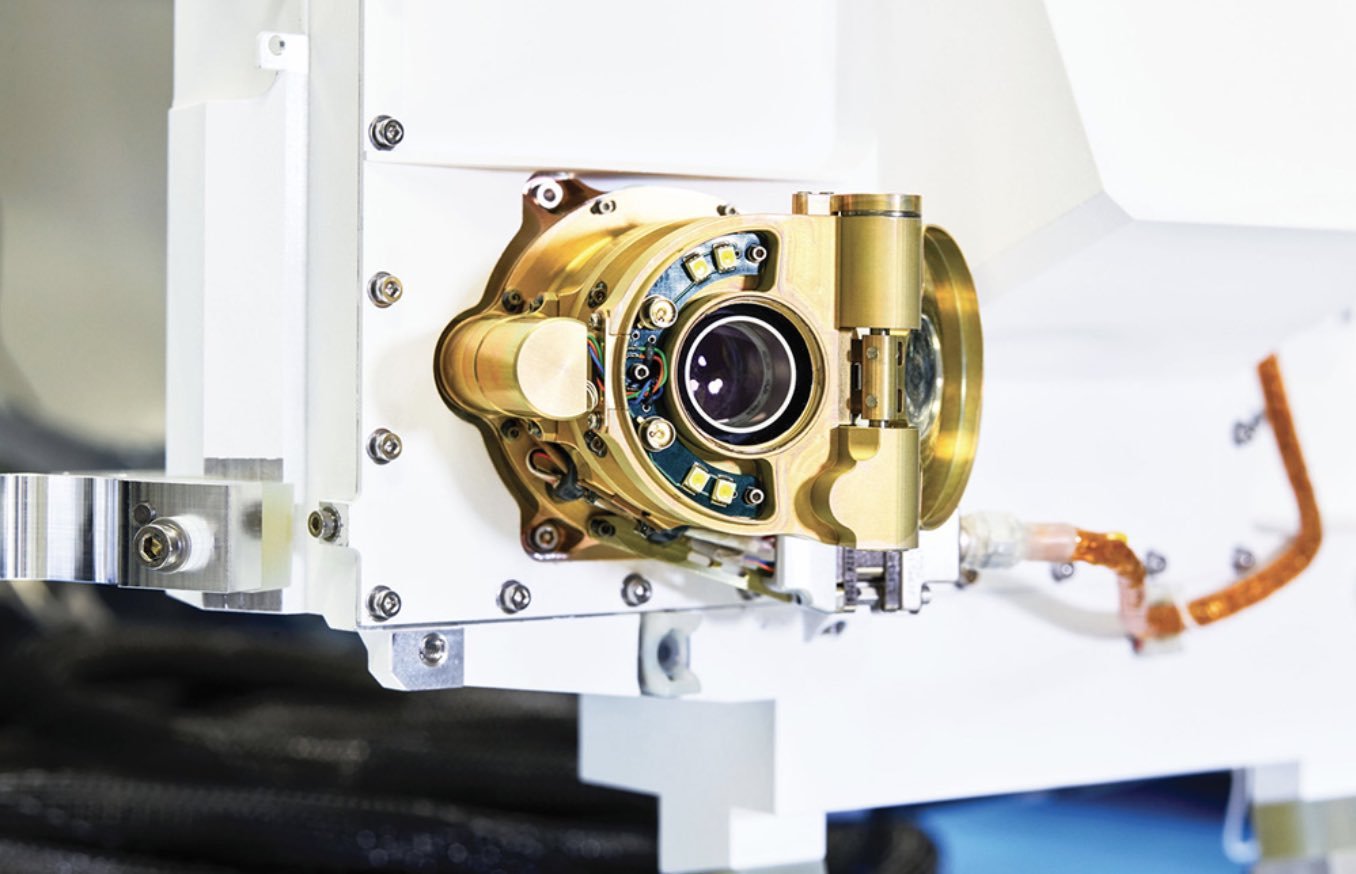

Welcome to this week’s installment of The Intelligence Brief… as Perseverance, the flagship of NASA’s Mars 2020 mission, continues its investigations at Jezero Crater, potentially promising discoveries have been made in an ancient delta that may help unravel a Martian mystery. Specifically, we’ll be looking at 1) the latest developments in Perseverance’s Red Planet pursuits, 2) what the collection of rock samples at Jezero Crater is revealing about conditions on ancient Mars, and 3) whether recent discoveries with the help of the rover’s SHERLOC instrument at the enigmatic Wildcat Ridge could point to evidence of life.
Quote of the Week
“Life is infinitely stranger than anything which the mind of man could invent.”
– Sherlock Holmes
Before we dive into things, a few of the stories we’ve been covering recently at The Debrief include how researchers say their newly developed “Biofinder” tool could help astrobiologists in the search for extraterrestrial life. Also, the creation of a new metasurface material could improve efforts to harness quantum entanglement in producing innovative new technologies. And as the 21st-century space race ensues, Chinese space architects are looking at using a lava tube on the Moon as the location of its future lunar base.
Also, Chrissy Newton recently caught up with astronomer Konstantin Batygin for a discussion about the ongoing search for life elsewhere in the cosmos. You can catch that discussion and the latest video reporting, podcasts, and other content from our team over on The Debrief’s YouTube channel. And as always, a complete listing of all our latest breaking science and defense stories can be found at the bottom of this week’s newsletter.
With that, it’s now time to head to the Red Planet, where recent discoveries by the Perseverance rover could yield promising new clues in the search for life on Mars.
Perseverance: Mars’ Resident Rockhound Rolls On
A Martian mystery billions of years in the making has been detected at Jezero Crater… and as Perseverance takes up the case, the latest offerings from NASA’s ambitious Mars mission show that the game is clearly afoot.
Roughly the size of an automobile, Perseverance, the main fixture of NASA’s Mars 2020 mission, was a product of the minds at the Jet Propulsion Laboratory in Pasadena, California. Launched on July 30, 2020, “Percy” touched down on the Red Planet on February 18, 2021, and has remained active within the Jezero Crater ever since.


To date, Percy has now successfully collected a dozen samples of rock core samples, which will be used to help determine if signs of life—either past, or present—exist on Earth’s planetary neighbor. Four samples have been collected since early July from an ancient river delta within the crater.
Stories in Stone
Thomas Zurbuchen, the NASA associate administrator for science, says that Jezero Crater provided “the best chance of providing scientifically excellent samples,” and early results from Percy’s collection efforts appear to be conveying that it was precisely where NASA needed to focus its efforts.
“These first two science campaigns have yielded an amazing diversity of samples,” Zurbuchen said, “to bring back to Earth by the Mars Sample Return campaign.” It was recently announced that Zurbuchen, who has led NASA’s Science Mission Directorate for more than six years, will be stepping down from his position later this year.


As Perseverance continues its mission, having already explored the base of the crater and various geological formations within it, the rover is presently studying sedimentary rocks deposited by ancient water movement within the delta where its current operations are based.
Perseverance project scientist Ken Farley, contrasting the igneous rocks from Percy’s earlier studies with the sedimentary samples it is currently collecting, says that the comparison “provides us with a rich understanding of the geologic history after the crater formed and a diverse sample suite. For example, we found a sandstone that carries grains and rock fragments created far from Jezero Crater – and a mudstone that includes intriguing organic compounds.”
New Clues Are Unearthed at Wildcat Ridge
Somewhere over the course of the last several billions of years, a one-meter-wide rock settled into the surrounding sand and mud within Jezero Crater, as the last of the saltwater forming an ancient lake finally evaporated. The rock, dubbed “Wildcat Ridge” by the Perseverance team, is now the focus of the rover’s geological studies, where it is utilizing one of its most interesting science instruments in the study of this ancient Martian feature.
The Scanning Habitable Environments with Raman & Luminescence for Organics & Chemicals, otherwise known as SHERLOC, has already yielded results that bear promise in terms of expanding NASA’s understanding of the ancient dynamics that once might have hosted life within the crater.


Based on SHERLOC’s most recent investigations, a particular variety of organic molecules have been detected which, according to NASA, appear to be correlated spatially with sulfate minerals present in samples collected by Percy. Why is this significant? The significance here has to do with the fact that sulfate minerals—minerals containing sulfate ions within their structure—which occur in layers of sedimentary rock like those presently being collected by Percy act almost like miniature time capsules that store key information about the conditions within the ancient watery environment where they formed.
Fundamentally, when the presence of organic molecules is detected, it often indicates compounds associated with the building blocks for life. In other words, although we are still far from proving the existence of life on Mars at any time, the presence of such organic molecules do represent a potential biosignature that may point to the presence of life having been there at one time.
In years past, Percy’s predecessor, NASA’s Curiosity Mars rover, also located evidence of organic matter in powdery geological samples it recovered. This, in addition to previous discoveries involving organic molecules elsewhere within Jezero Crater by Perseverance. However, unlike such past detections, SHERLOC’s analysis has produced the most abundant evidence of organics anywhere on Mars to date.
“The fact the organic matter was found in such a sedimentary rock – known for preserving fossils of ancient life here on Earth – is important,” Ken Farley said in a NASA statement, though cautioning that additional studies will be required to determine what, precisely, the samples collected at Wildcat Ridge may contain.
In the years ahead, the recent clues uncovered with the help of SHERLOC during Percy’s recent excursions could indeed provide promising results, once the samples finally make their way back to Earth as part of the Mars Sample Return mission.
That concludes this week’s installment of The Intelligence Brief. You can read past editions of The Intelligence Brief at our website, or if you found this installment online, don’t forget to subscribe and get future email editions from us here. Also, if you have a tip or other information you’d like to send along directly to me, you can email me at micah [@] thedebrief [dot] org, or Tweet at me @MicahHanks.


Here are the top stories we’re covering right now…
- A Meeting with ‘Oumuamua at the Venice Film Festival
On September 3, 2022, the 79th Venice Film Festival hosted a session titled “Meeting with `Oumuamua” at the Excelsior Hotel in Venice.
- Through the Looking-Glass: Odd New Metasurface Material is a “Doorway” to Strange Quantum Phenomenon
The creation of a new metasurface material could improve efforts to harness quantum entanglement in the production of innovative new technologies.
- Star Trek-Style Biofinder Could Be a Secret Weapon in the Search for ET
Researchers say their newly developed “Biofinder” tool could help astrobiologists in the search for extraterrestrial life.
- Chinese Scientists are Eyeing a Lunar Lava Tube as the Location for a Moon Base
Chinese space architects are looking at using a lava tube on the Moon as the location of its future lunar base.
- For the First Time, These Incredible New Images of the Sun Reveal Its Mysterious Chromosphere
A pair of incredible new images of the Sun are revealing hidden details about its mysterious chromosphere for the first time.
- Underwater Snow Beneath Europa’s Ice Sheet Could Aid the Future Europa Clipper Mission
A new study focused on underwater snow on Europa could better inform NASA’s Europa Clipper mission in the years ahead.
- Quantum Entanglement Discovery Could Lead to Breakthrough in Measuring Ultrafast Events
Researchers at Purdue University say observations of the quantum entanglement of photons in a recent study could point to novel ways of measuring events of incredibly short duration.
- Rise of the Stellarators: Fusion Power Could Become a Reality with This Innovative Technology, But There’s a Twist
Scientists could soon be closing in on making sustainable fusion energy a reality, thanks to an innovative new take on an existing technology that could help fusion reactions occur in a more confined space.
- New System Allows Lip-Reading Through Masks Using Wi-Fi and Radio Frequencies
Researchers have revealed a system that uses radio frequency (RF) and Wi-Fi signals for Lip-reading when the speaker is wearing a mask.
- The Scissors of Academic Review
Avi Loeb examines the recurring phenomenon of “experts” using academic review to dismiss novel ideas to protect their intellectual territory.
- In New Zealand, New Regulations Could Help Its Space Program Achieve Liftoff
Getting into the 21st-century space race, New Zealand may become the first country to have a space program that operates as a private company.
- NASA’s DART Spacecraft Is On Its Way Toward a Collision With an Asteroid Moon
This week’s Intelligence Brief examines NASA’s plans to smash its DART spacecraft into an asteroiod moonlet millions of miles away from Earth later this month.
- Astronomers Just Discovered a Pair of New Potentially Habitable Planets
Scientists from the University of Birmingham say they have discovered a pair of potentially habitable planets outside of our solar system.
- Debunking the Myths of Blockchain: What It Is and Isn’t
Blockchain technology will advance many industries, including healthcare and finance. But there are many myths that make the technology questionable.
